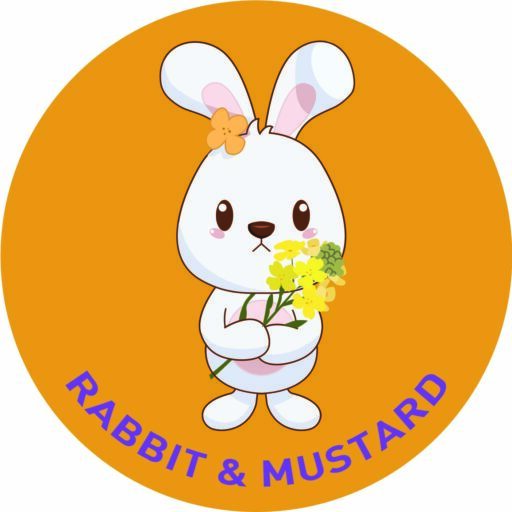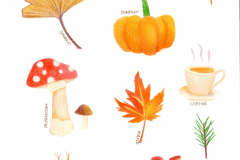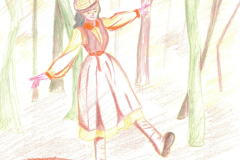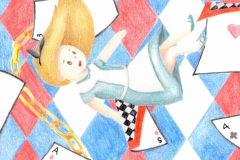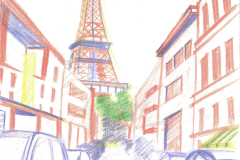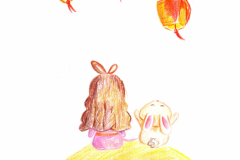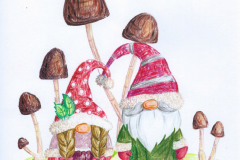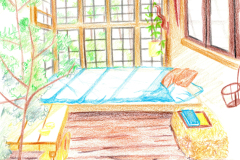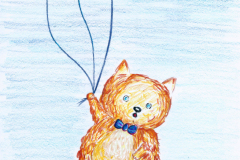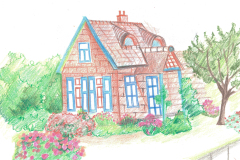Introduction
Your architecture sketchbook is more than just a notebook; it’s your personal space to develop ideas and experiment with new architectural concepts. Filling this sketchbook with creative ideas helps you improve as an architect or enthusiast. It allows you to track your progress and explore diverse styles and solutions.
In this article, you will discover practical ways to fill your architecture sketchbook with meaningful and creative ideas. These methods will help you understand your surroundings, improve your drawing skills, and enrich your architectural vision. Each chapter offers actionable advice to keep your sketchbook lively and effective.
Understanding the Purpose of Your Architecture Sketchbook
An architecture sketchbook isn’t just a notebook where you doodle random shapes—it’s where your ideas begin to take shape. For architects and students alike, it acts as a space to experiment without pressure, to capture fleeting thoughts or moments of insight you might otherwise forget. Sketchbooks let you explore forms, structures, and concepts visually, which often sparks new directions you hadn’t considered before.
Using a sketchbook supports creativity by giving you freedom to play with lines and perspectives. It also sharpens your skills through repetition and practice. The process of sketching helps develop your eye and hand coordination, and often surprises you with solutions that words alone can’t express.
Why Use a Sketchbook Regularly
You might wonder why you should keep sketching if you aren’t working on a project immediately. Frequent use helps because ideas don’t come neatly on schedule. When you record them right away, no matter how rough, you build a habit of visual thinking. Over time, this habit clarifies your thought process and deepens your understanding.
Plus, it’s useful to track your progress as an architect. Looking back at your older sketches often reveals growth you might overlook day to day. It also shows how certain concepts evolved, reminding you of paths worth revisiting or those better left behind.
Setting Personal Goals for Your Sketchbook
Without clear goals, a sketchbook can feel aimless or overwhelming. Think about what you want to get from it. Is it mastering shading techniques? Testing ideas for future projects? Or maybe exploring unusual shapes and spatial relationships? Defining what you want helps keep your efforts focused—and makes your sketchbook more meaningful.
Try setting small milestones. For example, dedicate a section to quick, timed sketches to improve speed, or commit to filling a page each day with architectural details you observe. Goals don’t have to be rigid; they can shift as your interests change, but having them steers your creativity in productive directions. What would you find most helpful to develop right now?
Finding Inspiration in Everyday Surroundings
Look around you. Inspiration often hides in plain sight, tucked away in the ordinary details of daily life. A crumbling brick wall, the shadow cast by a fire escape, or the slight curve of a wrought-iron railing can trigger ideas you might not expect. Nature, too, offers endless forms and patterns—the way light filters through leaves or how stones stack along a riverbank. It’s not just about grand buildings or iconic landmarks; sometimes, it’s the unnoticed corners of a city street that spark creativity.
Observing Details in Buildings and Spaces
Try slowing down and focusing on small elements: a window’s frame shape, the texture of a facade, or the arrangement of tiles on a floor. These details carry stories and design choices that can inspire your sketches. It might be tempting to overlook them, especially when rushing through a busy day, but paying attention here can lead your imagination to unexpected places. I remember once sitting on a bench and noticing the subtle asymmetry in a nearby doorway—a tiny detail that later influenced a whole roofline in a sketchbook drawing.
Capturing Ideas Through Quick Sketches and Notes
When inspiration hits, it rarely waits. Carry a small sketchbook and a pen—something portable you won’t hesitate to pull out. Fast sketching doesn’t need to be perfect; it’s about catching the essence before it slips away. Use quick lines, shorthand symbols, or even fragmented notes to freeze the moment. Sometimes just a few marks or a phrase can unlock bigger ideas later. Don’t worry if your lines are shaky or your handwriting messy—those imperfect marks preserve the spark better than any mental snapshot.
Exploring Different Sketching Techniques
When you open your architecture sketchbook, the way you put lines and shadows down can make all the difference. It’s not just about drawing buildings; it’s about expressing what you see and feel in varied, interesting ways. Line drawing, for example, can be simple yet powerful. Using confident, deliberate lines helps you capture the form of a structure quickly and clearly. Sometimes, just the contour—tracing edges and outlines—is enough to suggest volume and shape without overcomplicating things.
Then there’s shading and texture. Adding these can transform a flat sketch into something that feels tactile, almost believable. When you’re shading, think about where the light falls and where the shadows gather. Textures hint at the materials involved—a rough brick wall, sleek glass, or weathered wood. They don’t just add detail; they tell a story about the building’s feel and context.
Quick studies are another method to try. Rapid, loose sketches force you to focus on essential elements without getting hung up on precision. Perspective techniques come into play here, letting you set a scene or give a sense of scale. Through these various approaches, your sketchbook becomes a space to practice different ways to see and represent architecture. Don’t shy away from mixing techniques either—sometimes the best sketches combine simple lines with thoughtful shading.
Using Your Sketchbook to Develop Visual Vocabulary
Visual vocabulary in architecture means having a collection of shapes, forms, and patterns that you recognize and can draw on whenever you create or solve a design problem. Think of it as your personal toolkit—except instead of tools, it’s visual fragments that help you think architecturally. You build this vocabulary by being curious and observant, constantly collecting and sketching elements you find interesting or useful.
Start by sketching architectural details—motifs, windows, doors, textures of materials. Don’t rush to make perfect drawings; quick, rough sketches work fine. What matters is capturing the essence of those elements so you remember their character. I find myself returning to old pages filled with random window frames or patterned cornices—it’s like finding buried treasure when a project calls for something fresh.
To expand your options, try analyzing the shapes and how they relate to their function or setting. What makes a certain door inviting? How does a small pattern change the feel of a façade? Sketching pieces like this sharpens your understanding.
Once you have a bunch of these pieces, experiment by combining them. Mix a classic window shape with an unusual wall texture, or blend door motifs from different styles. Don’t hesitate to play around—sometimes odd pairings spark ideas you wouldn’t expect.
Does your sketchbook reflect this mix of observation and invention? Your visual vocabulary grows with every element you add, making your creative process a bit richer, even when you feel stuck.
Incorporating Color and Materials in Your Sketches
Using color in your architectural sketches can shift the whole way your ideas come across. It’s more than just decoration—it can highlight features or evoke certain feelings. But picking the right colors isn’t always straightforward. Sometimes a bold red might draw attention to a key façade element, yet it could also feel overwhelming if overused. It makes me wonder how much restraint is too much, or too little.
Here are a few tips to work through it:
- Choose palettes that match the mood of the building or space—cool blues can feel calm, warm ochres bring energy.
- Limit the number of colors to avoid noise, but don’t be afraid to experiment a bit.
- Think about natural lighting when you pick colors; shadows and highlights change hues.
Representing materials with simple textural marks can say a lot. For example, short, parallel lines can suggest wood grain without drowning your sketch in detail. A loose, stippled pattern might work well for stone, hinting at roughness. Smooth, horizontal strokes or washes can give a glassy feeling, but glass is tricky—it’s more about reflections than texture.
Trying these marks feels like a small challenge each time—sometimes it clicks immediately, other times it takes a few attempts. But those imperfect, almost crude marks can communicate ideas better than flashy renderings.
Have you tried combining subtle color washes with textural strokes? It’s a bit like layering thoughts on paper—both telling and leaving room for interpretation.
Keeping a Sketching Routine and Overcoming Blocks
Establishing a Daily or Weekly Sketching Habit
Setting aside time for sketching isn’t always easy—especially when life fills up quickly. But even short, regular sessions can make a difference. You might try scheduling a fixed time: maybe fifteen minutes in the morning or before bed. Consistency matters more than duration. If daily feels too much, aim for a few specific days each week instead.
Find a spot that feels inviting, something comfortable where you don’t mind sitting down without distractions. Keep your sketchbook and favorite tools nearby; that little nudge can make starting less of a hassle. Sometimes I’ve noticed that simply marking “sketch time” on my calendar shifts how seriously I treat the habit.
Don’t overthink your sketches. Quick studies or loose ideas work just as well as detailed drawings. The goal is to keep the practice alive. Ask yourself, what’s one thing you want to explore today? That small focus can give your routine purpose without pressure.
Finding Solutions When Facing Creative Blocks
Creative slumps happen. They’re frustrating but normal. When you feel stuck, changing your environment might help. A walk, a café, or even a park bench—different sights and sounds can trigger new ideas.
Using prompts can also shake up your routine. Try sketching a façade from memory or redesigning a familiar space on paper. Sometimes revisiting old sketches reveals unfinished thoughts or overlooked details worth exploring again.
It’s curious how flipping back through your own work can spark something fresh. Maybe you’ll find a line that wasn’t quite right before, or a form that suddenly seems promising. Don’t hesitate to trace or rework those earlier pages. Blocks may relax once you stop forcing creativity and let your mind wander a bit.
Ultimately, your sketchbook is a space to experiment—even when the ideas aren’t flowing easily. What small change might unlock your next sketch?
Using Technology to Enhance Your Sketchbook
You might think of your architecture sketchbook as a purely analog space—pen, paper, maybe some smudges and eraser marks. But blending this with digital tools can really open up new possibilities. Scanning your hand-drawn sketches lets you play with layers, tweak lines, or add color without worrying about ruining the original. I once spent hours fixing a perspective in Photoshop that I’d struggled with in pen—something I probably wouldn’t have dared to try on paper alone.
Digital editing also allows you to experiment with different materials and finishes virtually. For example, you can overlay textures or test lighting effects, which might be hard to replicate traditionally. This doesn’t replace your sketches but adds flexibility and depth.
Combining Hand Sketches with Digital Editing
Here’s something practical: scan or photograph your sketches, then bring them into software like Procreate or Adobe Fresco. You can clean up messy lines, add color washes, or even combine multiple sketches into one illustration. The digital process feels a bit like decorating your original drawing rather than overwriting it.
It raises the question—when does a hand sketch stop being “handmade”? Does it matter? The key point is to let your sketchbook evolve, reflecting both your tactile skills and your growing comfort with digital tools.
Apps That Support Architecture Sketching
Several apps deserve a try if you want to expand your sketchbook digitally:
- Procreate – Great for layering, brush variety, and precision.
- AutoCAD mobile – More technical, good for drafting on the go.
- Concepts – Flexible infinite canvas, useful for brainstorming ideas.
- Adobe Fresco – Nice mix of vector and raster drawing, good for mixed media.
- Evernote or OneNote – Help organize your scanned sketches and notes in one place.
Each app has quirks. For instance, I found Concept’s endless canvas both a blessing and a bit overwhelming at first. Try what suits your pace and style. Technology shouldn’t complicate your process—it should invite curiosity, even if it sometimes feels like a distraction.
Reviewing and Reflecting on Your Progress
Looking back through your sketchbook regularly does more than just show passage of time. It reveals how your ideas develop and where your skills improve—or sometimes stall. You might notice patterns you hadn’t seen before, like a recurring form that feels promising or a perspective that proves tricky to capture. Sitting down with your sketchbook lets you refine those sparks and decide what’s worth pushing further.
Try to be honest with yourself when you review. Pick out sketches that resonate; ask why they stand out. Then, look at ones that don’t quite hit the mark. What’s missing? Is it the detail, the composition, or perhaps the concept itself? This kind of reflection isn’t always comfortable, but it’s necessary if you want to grow.
Once you identify these points, think about what comes next. What would you like to explore more? Could you challenge yourself with a new technique or focus on a particular architectural style? Sketchbooks aren’t just archives—they’re maps. They can guide your next projects and keep your creativity moving forward. And if you’re unsure, that’s okay. Sometimes the best ideas come from uncertainty.
Analyzing Strengths and Areas for Improvement
When you evaluate your sketches, try to be specific. Don’t just label a drawing ‘good’ or ‘bad.’ Instead, ask questions like:
- Which elements communicate the idea best?
- Does the perspective feel accurate or off somehow?
- Are there details that work better than others?
- What emotions or messages does each sketch convey?
Focus on what you can build on. Maybe your line work is strong, but your shading feels flat. Maybe compositions are clear but lack a sense of scale. These observations help you target your efforts instead of guessing at what needs fixing.
Don’t overlook the small successes either. Those quick sketches that capture a feeling or establish an interesting shape can be more valuable than you realize. Sometimes what seems like a simple doodle is actually the kernel of a bigger idea.
Planning Future Sketching Projects
After reflecting and analyzing, set some clear, manageable goals for what to try next. These don’t have to be grand—small experiments work well. For example, you might decide to:
- Focus on urban sketches capturing everyday architecture around you.
- Practice drawing a particular architectural detail from different angles.
- Combine hand sketching with digital edits to push your ideas further.
Use your insights to create a loose plan. Maybe dedicate a section of your next sketchbook to a single theme, or sketch faster to capture first impressions before refining later. Planning doesn’t mean restricting creativity—it can actually open new doors by giving direction when you feel stuck.
Remember, your goals can shift as you progress. Sometimes a sketch leads you somewhere unexpected. That’s part of the process. Keep sketching, reviewing, and planning in a cycle that feels natural to you.
Conclusions
Filling your architecture sketchbook with creative ideas requires consistent practice and keen observation. By gathering inspiration from your environment and developing your sketching skills, you can create a valuable resource for your architectural journey. Your sketchbook becomes a reflection of your growth and imagination.
Remember to experiment, document your ideas regularly, and stay curious. Your architecture sketchbook is a tool that will help you think critically and creatively about architecture. Embrace it fully to unlock new possibilities and express your unique architectural voice.
